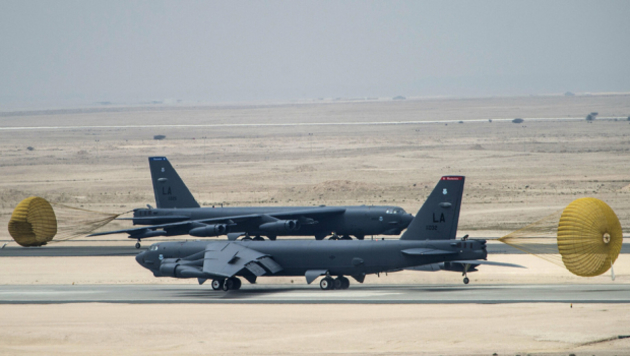As the Afghan government crumbled before the Taliban in mid-August, pilots trained by the United States fled in their aircraft. Taking hundreds of crew and family with them, the pilots flew north to Central Asia, with the bulk landing in Uzbekistan but another group seeking safety in Tajikistan.
The Diplomat reports that Central Asia isn’t far enough to flee for pilots hated by the Taliban for their role in airstrikes, but with new delays in the overall evacuation process, it may be some time before they arrive in the United States.
A reported 46 aircraft, including Black Hawk and MI-17 helicopters as well as A-29 light attack aircraft and PC-12 surveillance aircraft, landed in Termez, Uzbekistan carrying more that 450 people on August 15. An additional group of more than 140 Afghans arrived in Bokhtar, Tajikistan, with early reports mentioning around 18 aircraft.
Uzbekistan has been under considerable pressure to get rid of the pilots; meanwhile, Tajikistan has faced less pressure to do so. Neither state is particularly welcoming of refugees for the long term, though both have assisted the United States and other Western countries in providing transit and temporary refuge to those fleeing Afghanistan via air. Tashkent, which has engaged in talks over the last few years with the Taliban, has signaled its intent to work with, if not recognize, the Taliban government. The Tajik government, on the other hand, has been more circumspect. Tajik President Emomali Rahmon said he would only recognize an “inclusive” Taliban government, specifically mentioning ethnic inclusivity given the large population of ethnic Tajiks in Afghanistan. The announced caretaker Taliban government is not exactly “inclusive.”
A Wall Street Journal report late last month explained that “Uzbekistan is urging Washington to act quickly to take the pilots to a third country to avoid inflaming relations with the Taliban in neighboring Afghanistan.” That process has begun. On Sunday a first group of Afghan pilots who had flown to Uzbekistan were transferred to a U.S. military base in the United Arab Emirates. Two more groups are expected to follow soon.
The Taliban, which had called for the pilots and aircraft to be returned to Afghanistan, criticized the transfer. Per the Wall Street Journal, Taliban spokesman Suhail Shaheen said: “These pilots should return to their country, the country needs them… We are just starting to rebuild our country. The world should help us, instead of hurling hurdles in the way of reconstruction of Afghanistan and economic prosperity of our people.”
The U.S. Department of Defense had appropriated more than $8.5 billion since 2010 to develop the Afghan air force and its special mission wing. The Taliban, without their own air capabilities, were most vulnerable to airstrikes. While the Taliban have promised amnesty to the former Afghan government’s forces, few take that pledge seriously. The pilots who landed in Tajikistan have not been covered as heavily as those who landed in Uzbekistan. Beyond the smaller numbers, the differing political positions of the two Central Asian governments vis-a-vis the Taliban are a significant factor. To put it bluntly: The Afghan pilots in Tajikistan are in far less danger of being turned over to the Taliban than those in Uzbekistan.
A State Department spokesperson told The Diplomat, without including any specifics about the numbers of Afghans or aircraft, that “the Afghan personnel and aircraft are secure and being housed by the government of Tajikistan.” The spokesperson also commented that the United States is “confident that the government of Tajikistan is also committed to the welfare of those who have left Afghanistan.”
The timeline for bringing the Afghan pilots out of Tajikistan is unclear. Relatives told The Diplomat that the pilots had their cellphones taken and communication with and about the group has been limited. Meanwhile, the Tajik government has been occupied with other matters. Last week, Tajikistan marked its 30th independence anniversary and this week Dushanbe will play host to summits for both the Collective Security Treaty Organization (CSTO) and Shanghai Cooperation Organization (SCO).
Whatever timeline existed has also arguably been delayed by the temporary pause in evacuation flights from overseas U.S. bases to the United States due to a possible measles outbreak. After four Afghans arriving in the U.S. were found to have measles, the Centers for Disease Control and Prevention (CDC) requested that evacuation flights be suspended temporarily. Measles is an extremely contagious disease caused by a virus, which spreads via coughing and sneezing. A vaccine has been available since 1963, and the disease is all-but-absent from the United States and other Western countries save for occasional outbreaks among unvaccinated populations, which includes very young children unable to be vaccinated.
The pause will stall Afghans evacuees at U.S. bases in third countries, such as in the UAE and Germany which will further strain diplomatic relations with partners facilitating the U.S. evacuation flights. The German government had agreed to allow Afghans to stay at Ramstein Air Base for only 10 days, but with onward evacuation flights to the U.S. paused that limitation will quickly become impossible to hold to.
As of September 8, the Biden administration said it had evacuated more than 60,000 people from Afghanistan to the United States since August 17 — most of them Afghans.
















